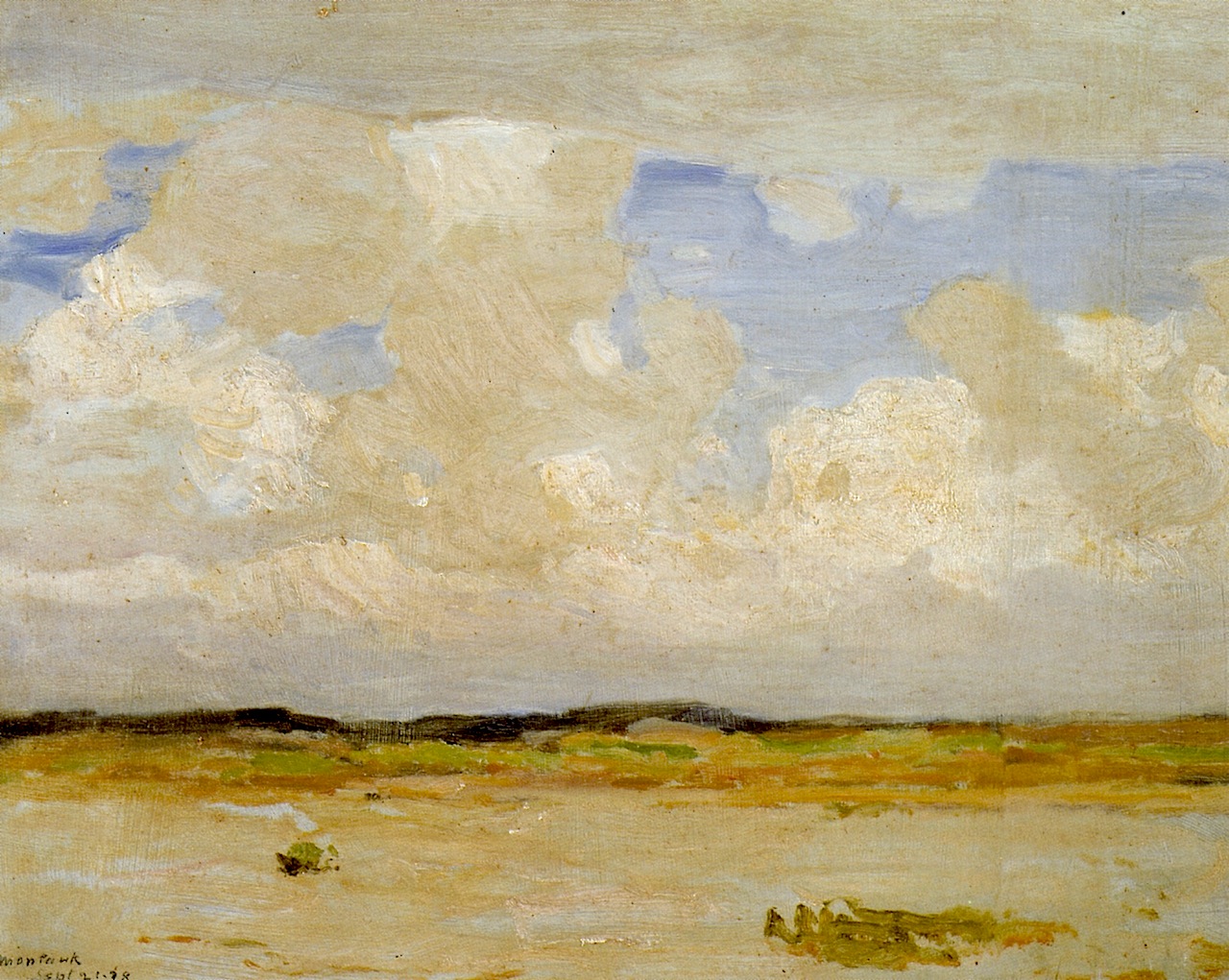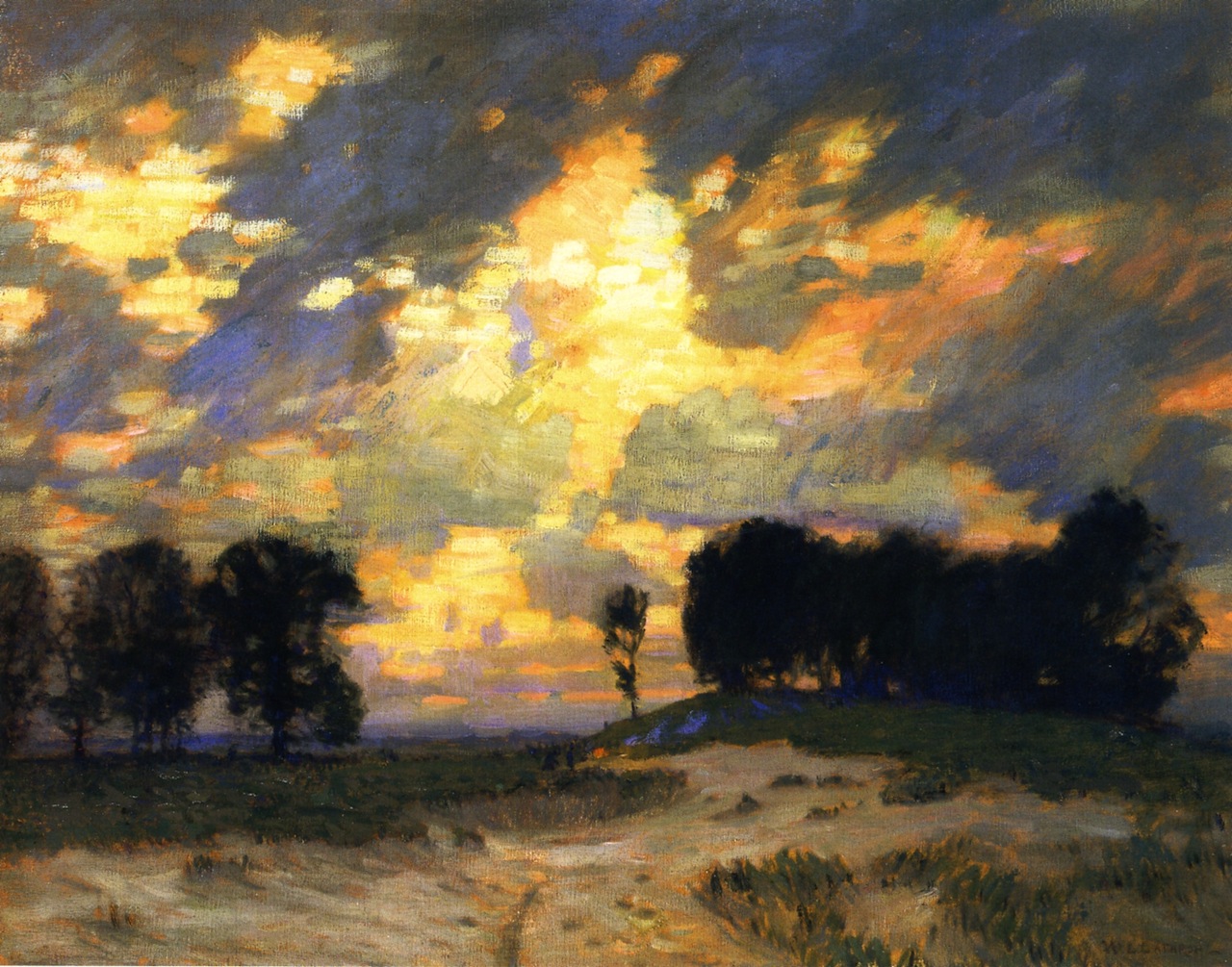William Langson Lathrop was born somewhere in the American Midwest (most likely Warren, Illinois) in 1859. His art career was slow to take off, beginning after a stint in the Navy and a scarcely lucrative job as an etcher for Harper’s. However, his fame soared after exhibiting his impressionist landscapes with the New York Water Color Club in the late 1890s. Soon after, he moved to New Hope, Pennsylvania, where he founded the eponymous art school and colony.
In Montauk, September 21st, 1938, we see the limited color palette and simple, stark landscape that were Lathrop’s watermarks. He rarely featured figures or man-made structures, preferring instead the raw lay of the land.
The vegetation blends and blurs, making differentiation between trees and earth nearly impossible. The sweeping of the sky and thick blotches of greenery reflect a haste to capture the moment’s atmospheric conditions before they shift.
Speaking of which, it was the infamous Hurricane of 1938 that brought about Lathrop’s demise. Aboard his hand-built sailboat, the Widge, he headed out into Atlantic Coastal waters in late September as the storm came howling in. The boat was found in the aftermath, unharmed — but his body washed up several days later.
If the date in the bottom left holds up, this is most likely Lathrop’s last painting. Ironically, it captures the clouds that preceded the storm — which became known as “The Long Island Express” — on which his death arrived. Could it be that these are billows of steam from its mighty smokestack, a forewarning as it barrels towards the coast, bearing Lathrop’s end?
Anthony de Feo


 William Langson Lathrop
William Langson Lathrop